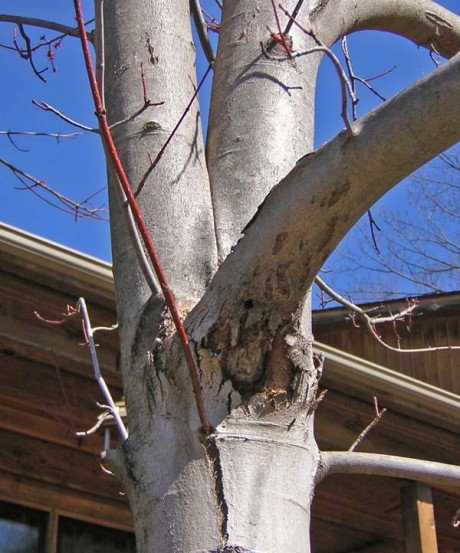How to identify tree hazards
Recognizing basic hazards in your trees can protect you and others from loss
By Amy NeyThe beauty and variety of trees around us may change with location and season, but the benefits of trees remain constant. They provide shade, reduce home energy costs, increase property values, block noise, prevent erosion, produce oxygen, sequester carbon, filter pollutants from the air and soil, and provide aesthetic benefits to our environment.
But, like most things in our environment, trees also house innate hazards. In June 2010, the dangers of trees made national news when an infant was killed and her mother injured by a falling tree limb outside of New York’s Central Park Zoo. Cities across the country took a good look at their tree care programs in hopes that no similar accidents would occur in their locale. But individuals are just as liable for the trees on their property.
A hazard tree is one that is in danger of structural failure and is likely to fall on a target. While inspecting a tree, it is important to look at all sides and parts of the tree, from the roots and trunk all the way to the tips of the branches (using binoculars if necessary). Look for possible targets, including power lines, play sets, structures, vehicles, etc. Also keep in mind factors such as the overall health of the tree, tree species (some, including red maple, are more prone to defects than others), and the size and age of the tree.
There are several things to look for in your tree inspection.
- Dead wood—including branches or the entire tree—should be removed promptly because it is inflexible in the wind and can fall at any time. Spring ice storms can be very effective at killing the tops of trees, thereby affecting the health of the entire tree.
- Deep cracks, cracks connected to another defect, or a cracked branch, are all signs of serious problems.
- Weak branch unions (where two branches join) that include bark between the branches signal possible future failure.
- Interior decay can be indicated by fungus found on the roots, trunk or branches.
- Cankers (localized areas of damaged or missing bark) can be caused by construction, pruning, maintenance (lawnmowers and weed trimmers, especially), or other injury and can lead to decay. Cankers covering over 50 percent of a tree’s circumference require swift attention.
- Root problems can be evidenced by a lean causing soil mounding, dead wood in the tree crown, unusually small or off-color leaves, or twig or branch dieback. Obvious items to look for include removal of roots for paving or sidewalks, soil compaction due to being driven or parked on, and the raising or lowering of the soil level around the tree.
- Poor tree architecture or form resulting in a tree that is misshapen and off balance is also an indicator of poor health.
- Multiple defects, especially those on the trunk of the tree or touching one another, signify severe hazard.
Methods for correcting hazard tree problems consist of regular monitoring and maintenance, moving the target, pruning the tree, and removing the tree. The first, and most important method, is regular monitoring via visual inspection and maintenance, including pruning correctly and while the tree is young, watering, mulching and even fertilizing, if necessary. An ounce of prevention is truly worth a pound of cure! Once you determine a tree is hazardous, the simplest step is to move the target such as a landscape feature, picnic table or vehicle. If the target is a power line or structure that cannot be moved, it is time to have the tree professionally pruned (not topped or tipped) to remove defective branches. If none of the above methods is viable, the last option is to remove the tree. If possible, plant a native species in a wise location to replace the tree that was removed.
Trees with a severe hazard or those with branches too large to prune with a small saw should be inspected and maintained by an ISA-certified arborist. A trained arborist should never perform topping (removal of a tree’s branches to reduce height) or tipping (shortening a tree’s branches to reduce width), as both practices are harmful to a tree and can lead to future decay and death.
“How to Prune Trees” is an excellent USDA publication on pruning. Download it for free at publications.usa.gov/USAPubs.php?PubID=1299. For more information about proper tree maintenance and to find a certified arborist, visit treesaregood.com.
About the Author
Amy Ney is a freelance writer with a professional background in private land management. She is a member of Haywood EMC.-
Share this story:
{ampz:Custom share for module}
